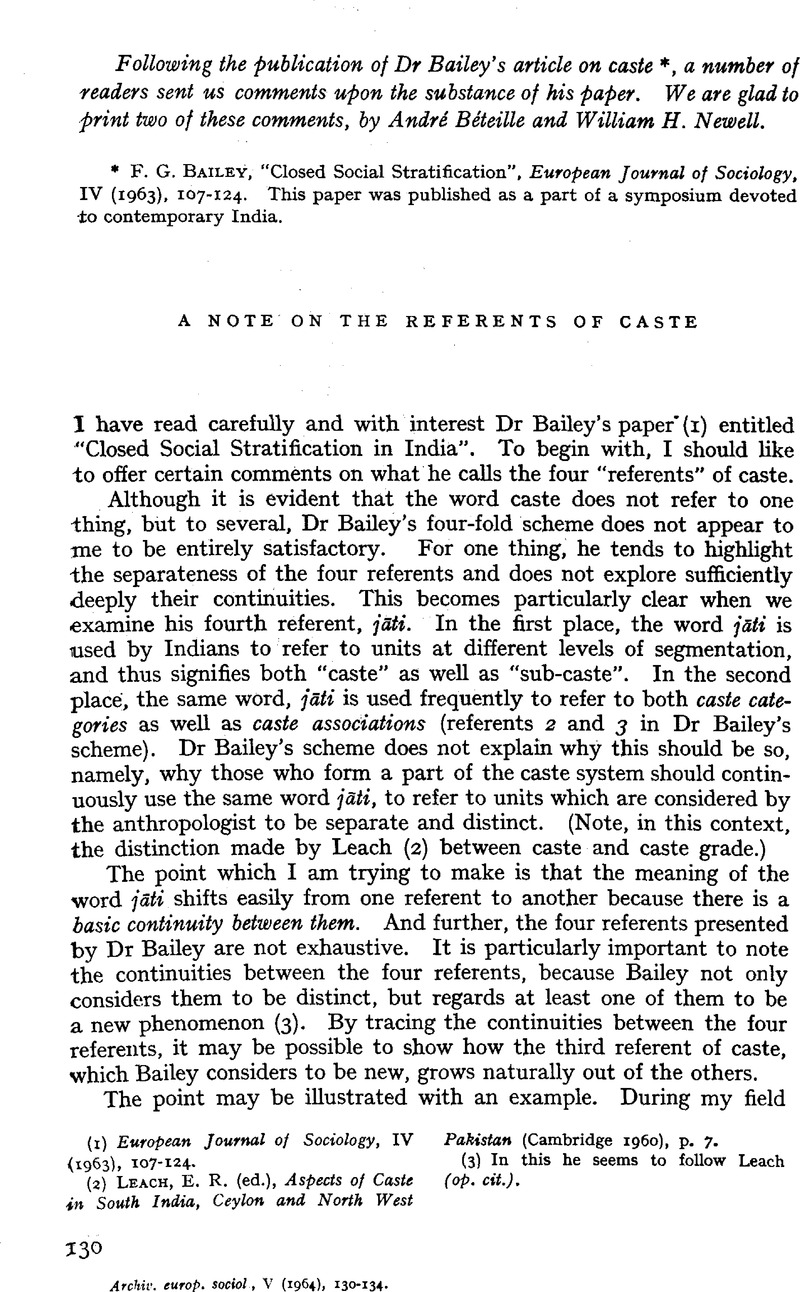Article contents
A Note on the Referents of Caste
Published online by Cambridge University Press: 28 July 2009
Abstract

- Type
- Notes Critiques
- Information
- European Journal of Sociology / Archives Européennes de Sociologie , Volume 5 , Issue 1 , June 1964 , pp. 130 - 134
- Copyright
- Copyright © Archives Européenes de Sociology 1964
References
(1) European Journal of Sociology, IV (1963), 107–124.Google Scholar
(2) Leach, E. R. (ed.), Aspects of Caste in South India, Ceylon and North West Pakistan (Cambridge 1960), p. 7.Google Scholar
(3) In this he seems to follow Leach (op. cit.).
(4) Loosely referred to as Shudras by the Brahmins, particularly in the villages. This usage is not a new one, and figures in a census classification made as early as of 1831.
(5) Mrs Karvé has given us a similar scheme of segmentation for the Brahmins of Maharashtra in Kinship Organisation in India (Poona 1953).Google Scholar
(6) The Nuer (Oxford 1940).Google Scholar
(7) I have not been able to find a suitable term for this category, but its separateness from the temple priests on the one hand, and the Panchangakkarans, on the other, is evident.
(8) Such seems to be the view of Leach at least (op. cit.).
(9) Caste in India3 (Bombay 1961), pp. 50–51.Google Scholar
(10) This, of course, does not mean that castes are the only kind of units or the most important of the ones which compete for political power in India today.
- 9
- Cited by




